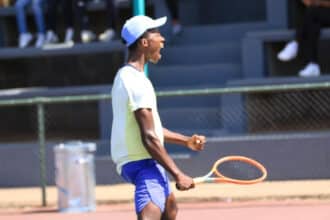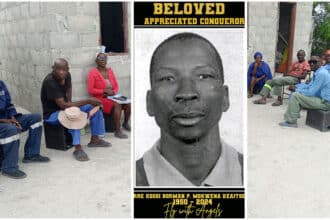The high school social studies textbooks I read taught that a Motswana has three homes: legae (a house in a village), moraka (grazing post) and masimo (lands to till).
Gaborone City and other urban centres are places where people go to find work – not to live, and certainly not to set down roots.
Having spent one’s most productive years toiling to earn a salary, clinging on to the permanent and pensionable status, when retirement age arrives, a Motswana returns home to the village–to wait for death.
If you are like Rre Moeng, of Tsalanang, you joke about this inevitability and say you are returning home to finally ‘eat life’.
Perhaps there was a time when this triangular utopia was possible. It no longer is.
Spending twenty years waiting to be allocated a plot should disabuse you of this fantasy.
It is best not to get into the matter of who actually owns land. Is it the ones who are so rooted to this place that they can call no other place home? Or is it in the hands of those who can flit away to faraway lands when times get tough? Like one impostor once said: ‘I use my Botswana passport when it is convenient.”
Claiming Gaborone City as one’s ‘home’ is thought, by some, to be saying you are unsure of your heritage, denying your roots, maybe even ashamed of where you really come from. “No one comes from Gaborone.”
Start with learning how to pronounce the name of this place. At least. Feel the ‘G’ scratch the back of your palate, add ‘ahhhhh’ like a doctor asks you to do.
Sound ‘bo’ like book, the ‘ro’ too, almost. Remove the ‘t’ from nit to end. Ga-bo-ro-ne. Gaberones was discarded in 1969, although some still refer to it as such.
And, please, please. She was never ever Gabarone. These relics of the colonial master have no place here.
The name means ‘not unfitting’; artistically stretched, it says ‘it is well’. You see, Gaborone’s name speaks, if you care to listen.
Call it Gabz, if brevity is your thing. Mageba, will do too, or GC (since 1986) when Gaborone added city to its name.
Some say this city has no face, bears no distinguishing features, hides no birthmark, wears no tattoo, has no identity and lacks soul.
Let us set off from where Independence Avenue begins, traveling east to cut across White City and her neighbours.
Once a source of labour for Gaborone’s growing construction industry, White City mushroomed into a collection of tiny two-roomed structures painted white.
Dikhetene (Place of Curtains), a Potemkin village, was drawn, curtain-like, around it because keeping up appearances matters–especially when foreign dignitaries visit.
But, fun was had in that place. Los-My-Cheri was around there somewhere.
Along the way, I count six churches (there could very well be more). One can only imagine the clash if they were to ring their bells simultaneously.
You cannot miss the Catholic Cathedral on the corner of Independence Avenue and Queen’s Road.
It stands proud and tallest; its steeple visible, as if it points the way to heaven.
Diagonally across from the cathedral is the Civic Centre, previously called Town Hall.
It is said that from the office of the Mayor of Gaborone one could see clear across the Main Mall right to Parliament.
That once clear view has been obscured by new structures. Old buildings that held cherished memories have been razed to the ground, replaced with modern structures—some would argue that they are ugly.
Fortunately, the National Museum and Art Gallery is still standing; within its walls snippets of the history of Botswana’s people is told.
Continuing down Independence Avenue, we leave behind The Mall commercial area and re-enter a residential area, albeit a different type, nicknamed ‘Beware of the Dog’, in Setswana ‘Tshaba Ntsa’.
High walls, remote controlled gates and security company vans are common features in this suburb.
Tucked in that area stands the State House, home of Botswana’s President. Once upon a time it was possible to walk past it.
No more.
But, let us head back to The Mall, to the home affairs and labour office where national identification cards are issued.
I wonder where the people filling the room call home. A variety of languages is spoken: guttural, heavy, light, flowery – none of these are Setswana or Setswana-like.
Two teenagers converse in spoken-through-the-nose-English. A Chinese couple walks into the offices and I am reminded of a Chinese friend who runs a takeaway.
She said she wanted to move away from the White City area. ‘Not safe now. Too many foreigners,’ she whispered.I smile.





